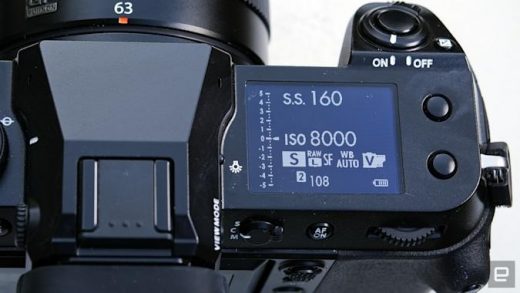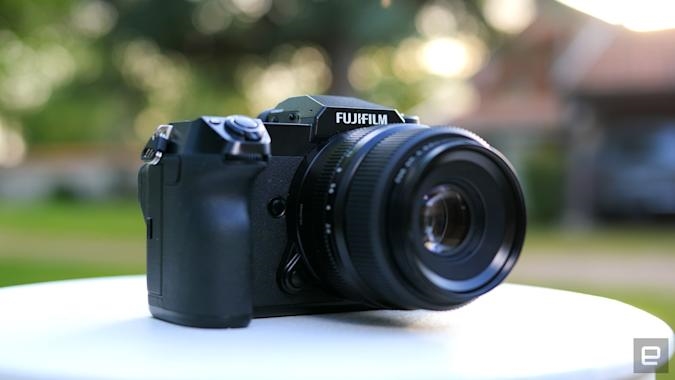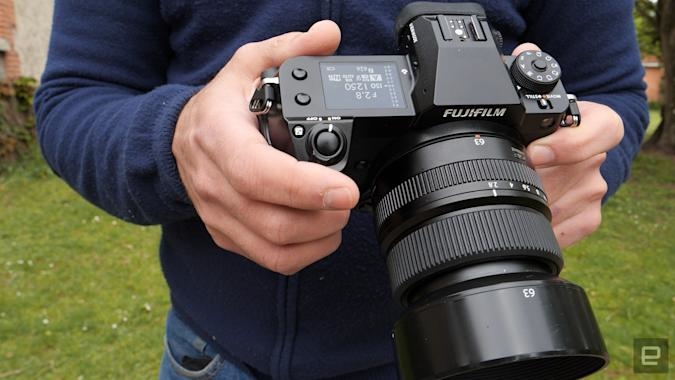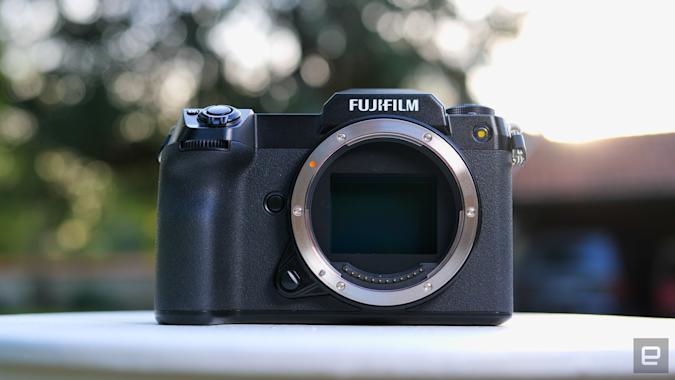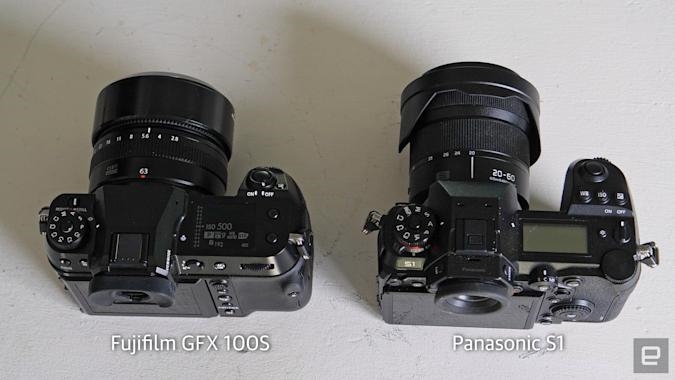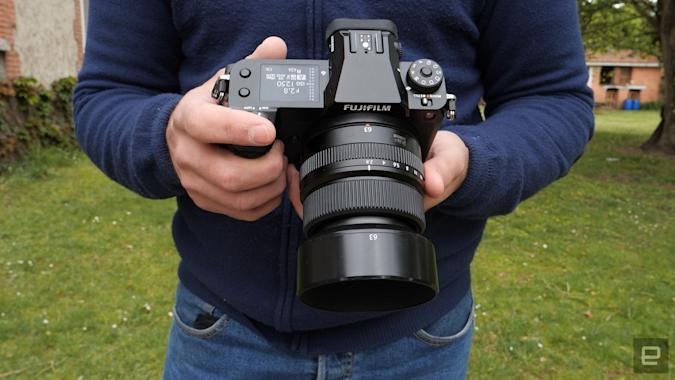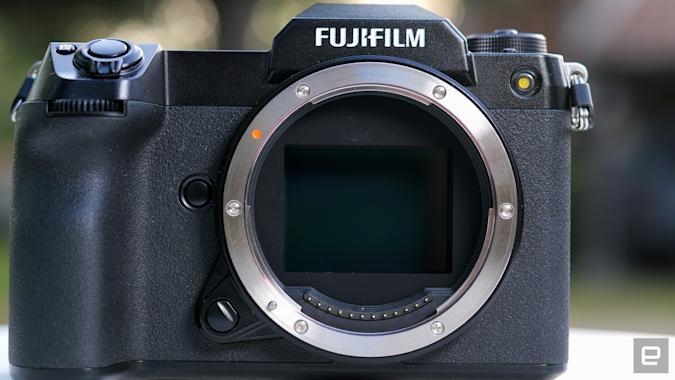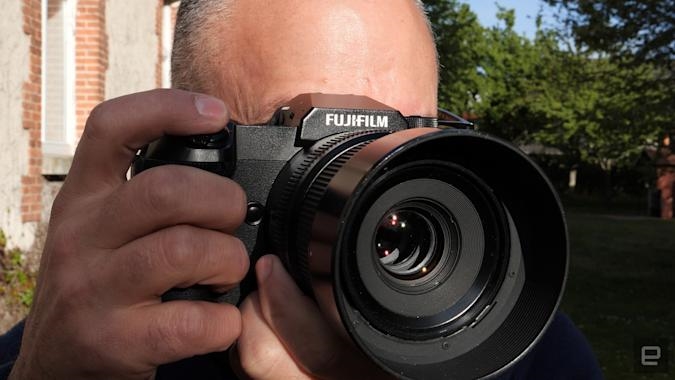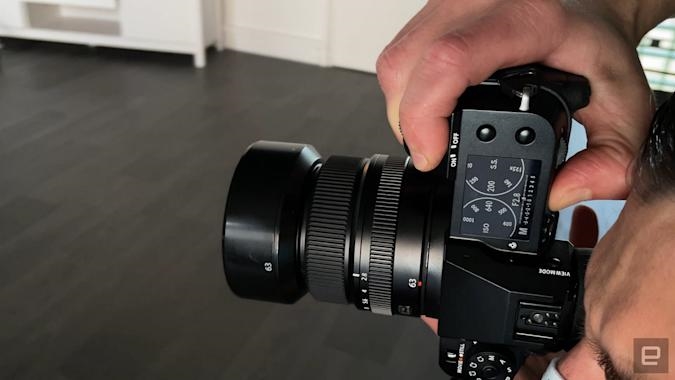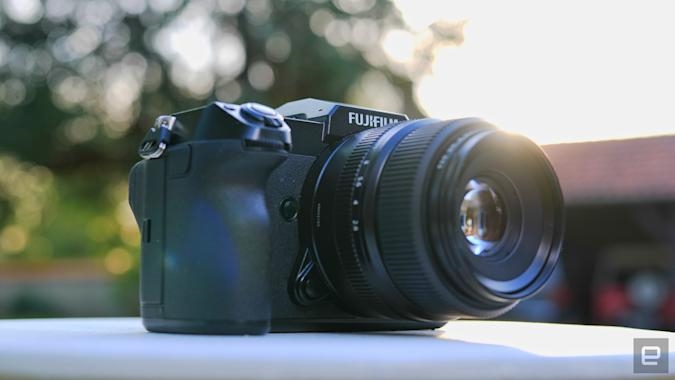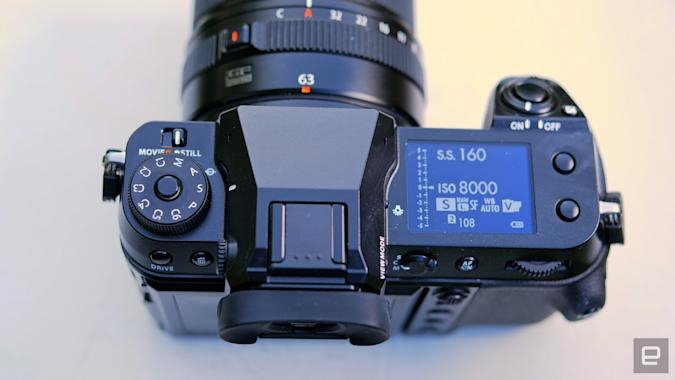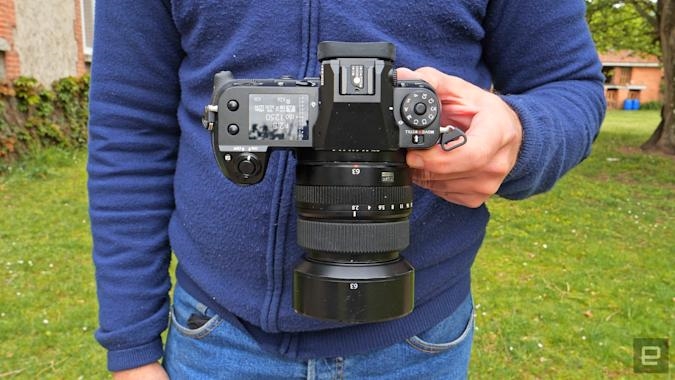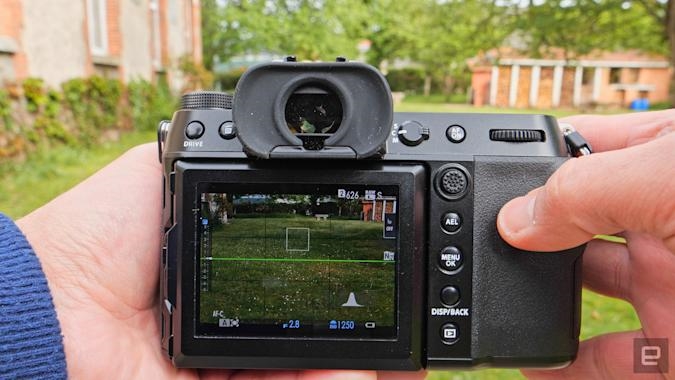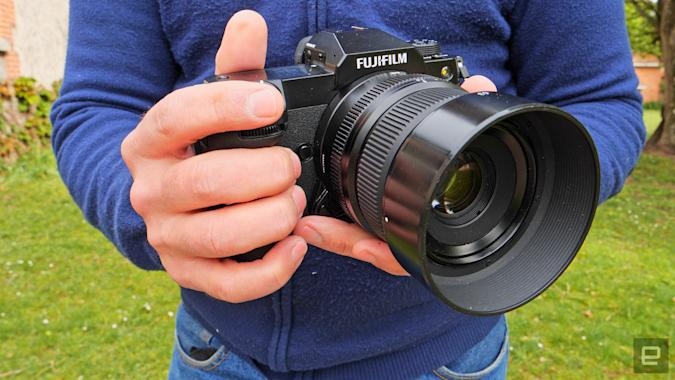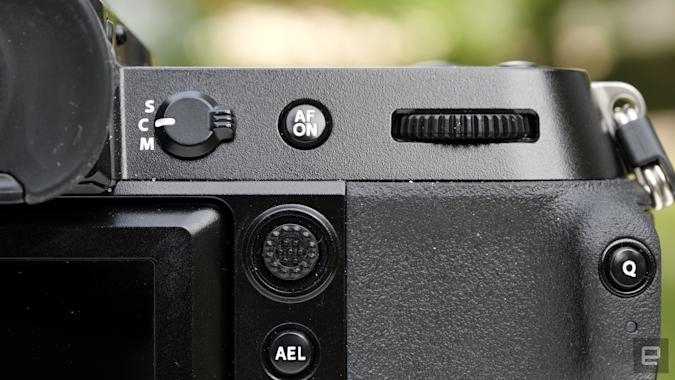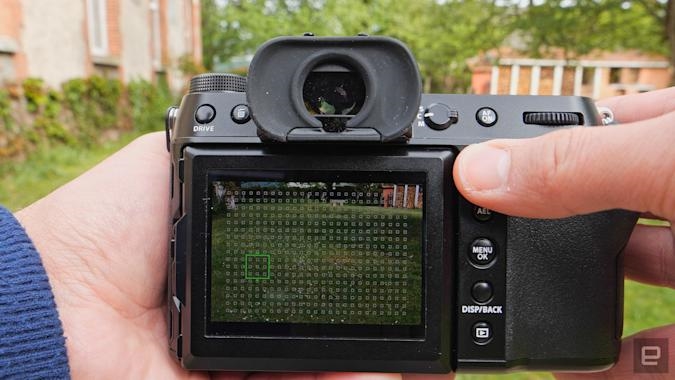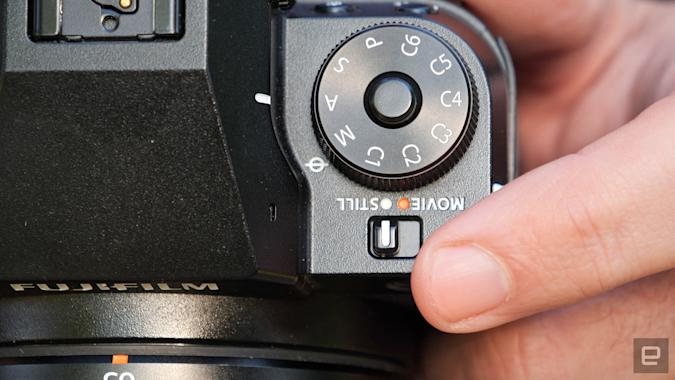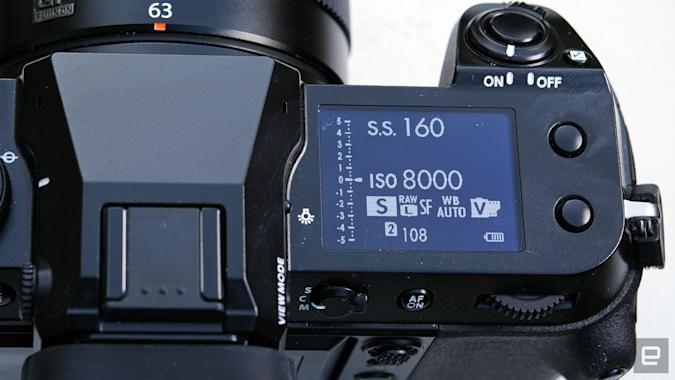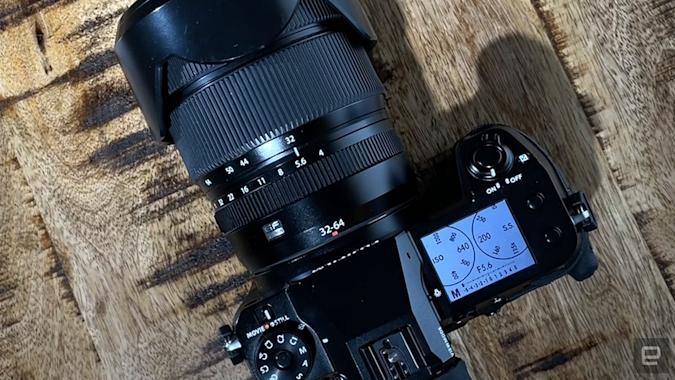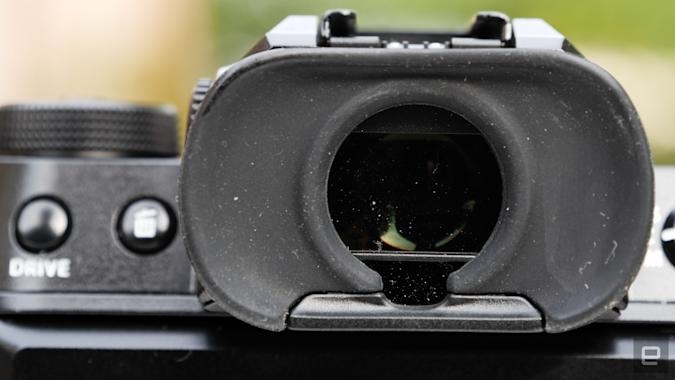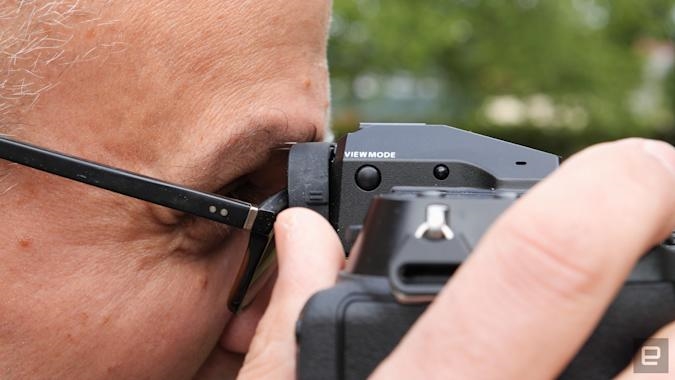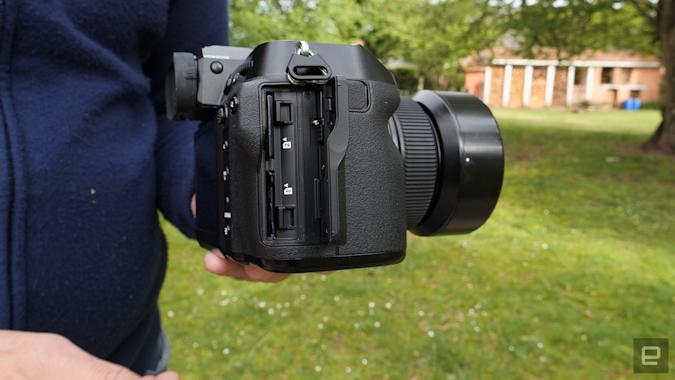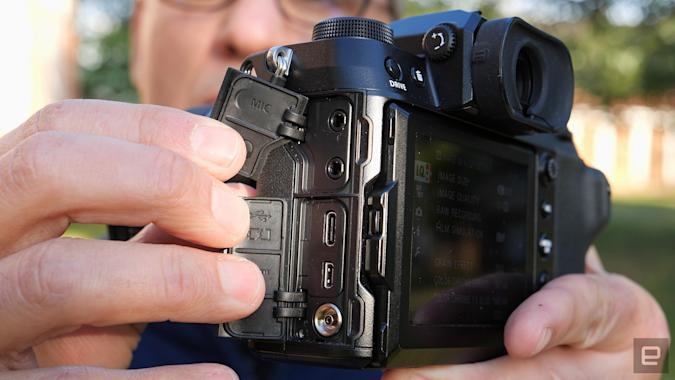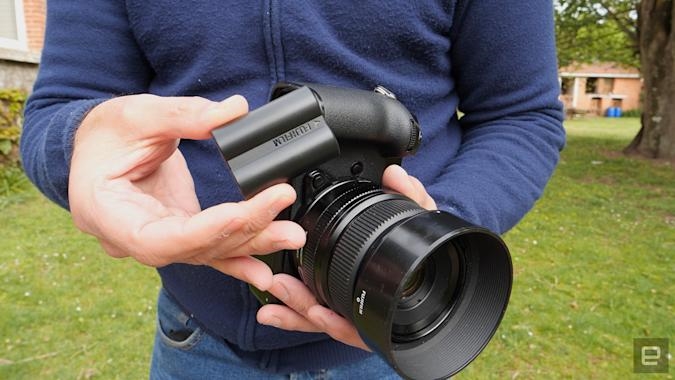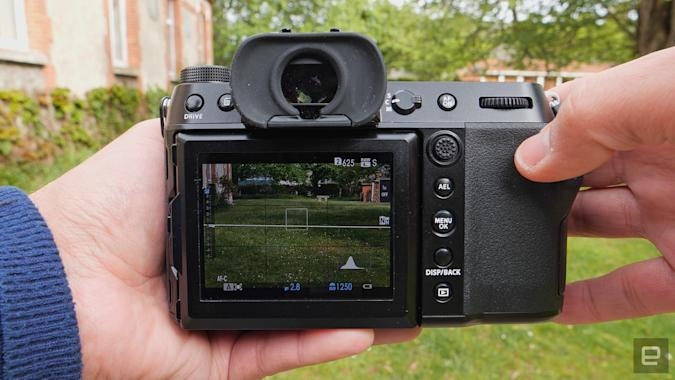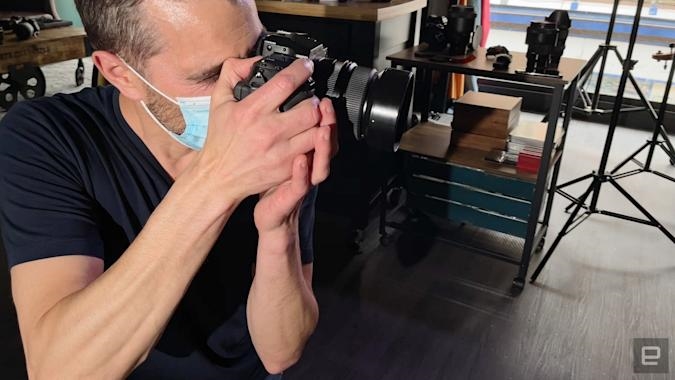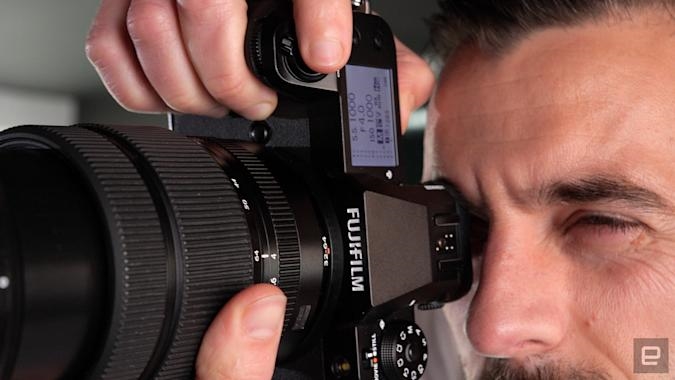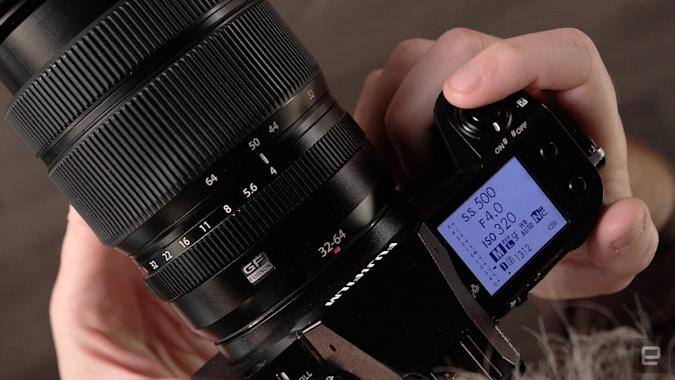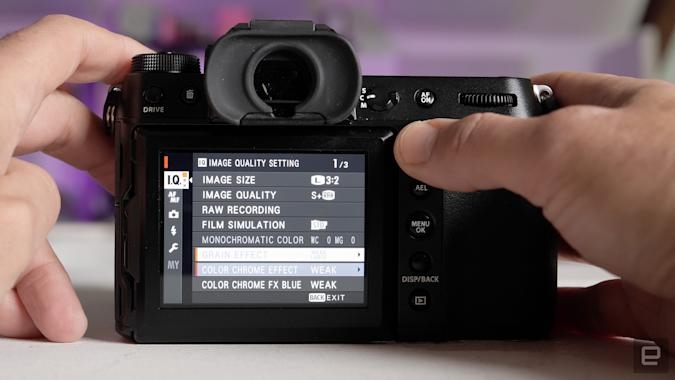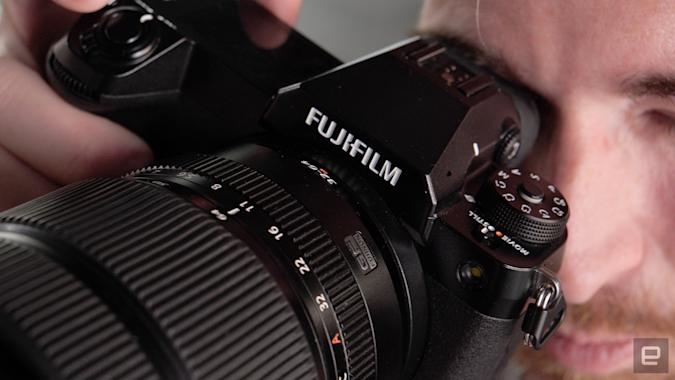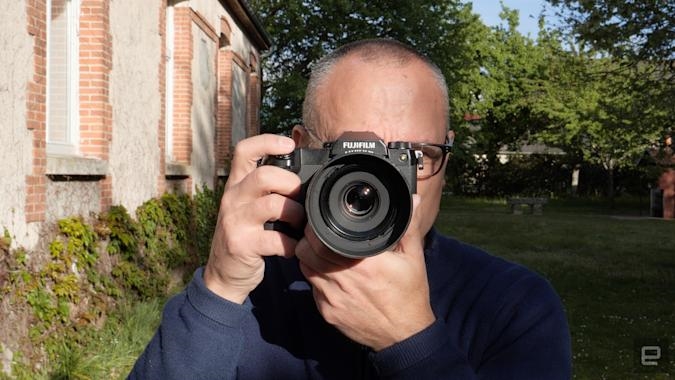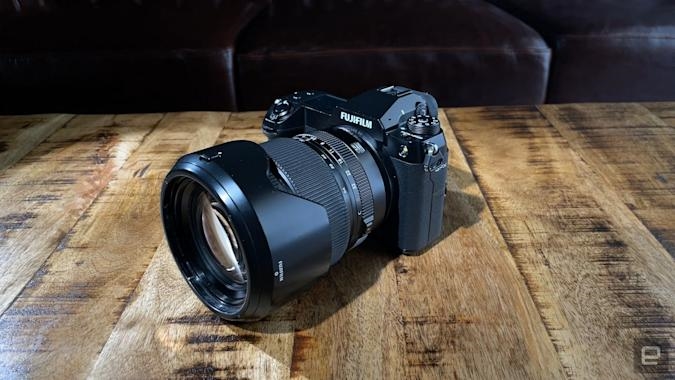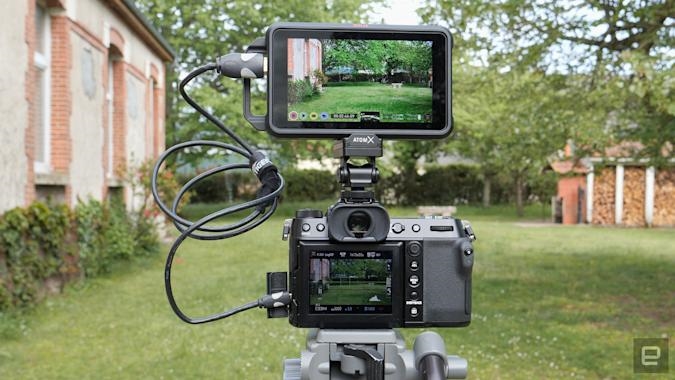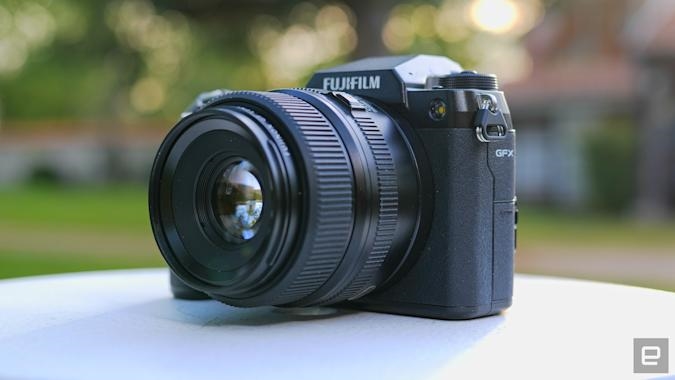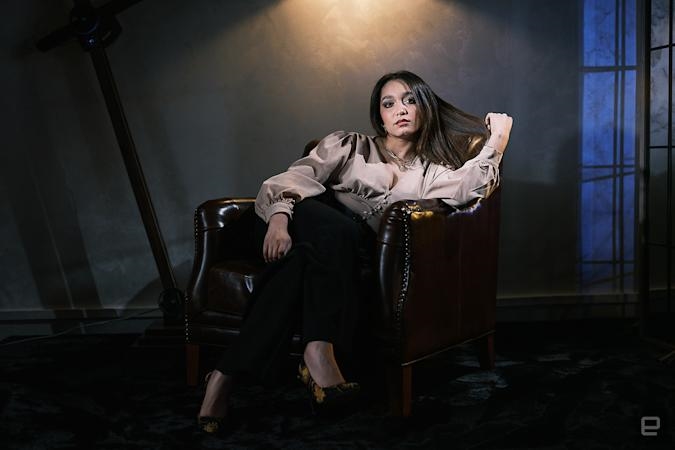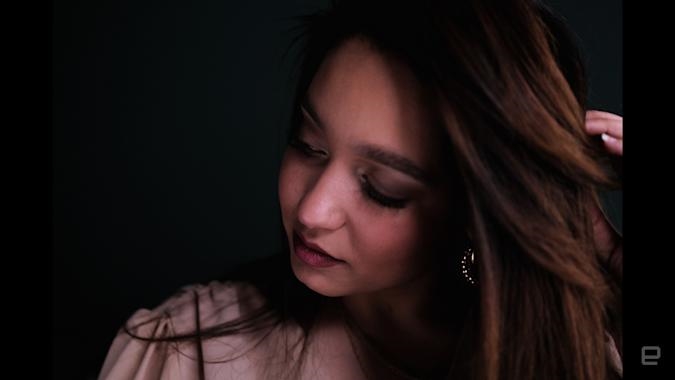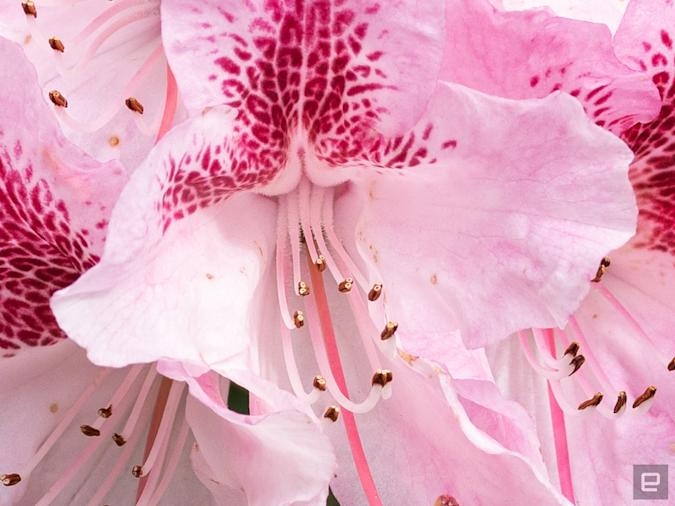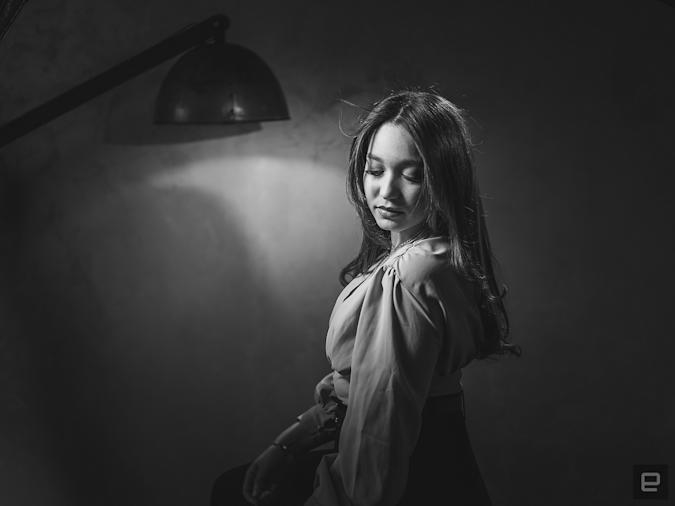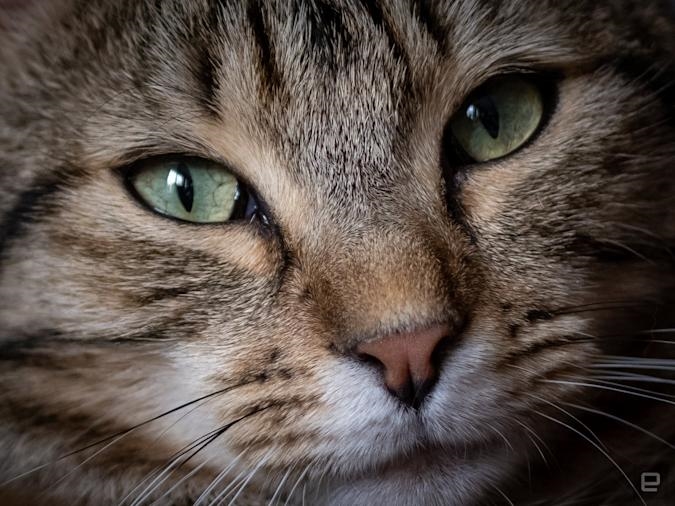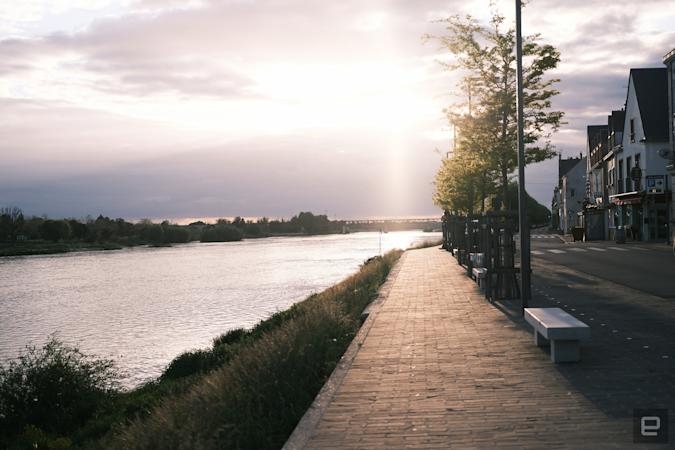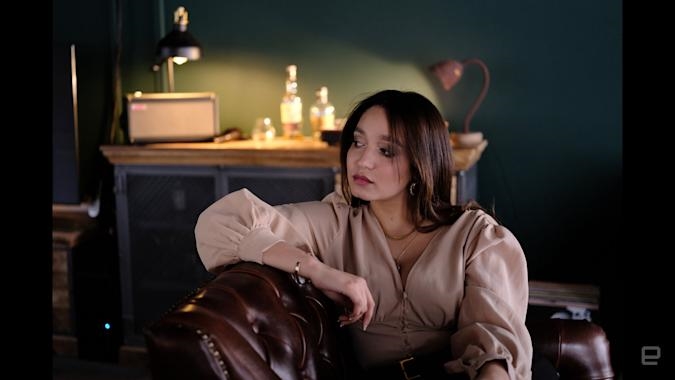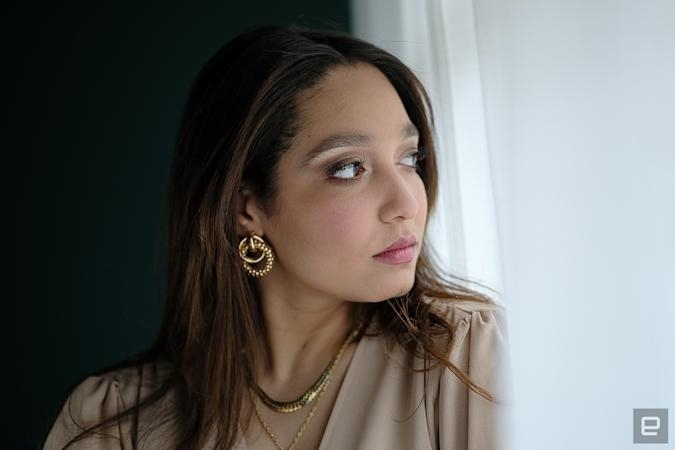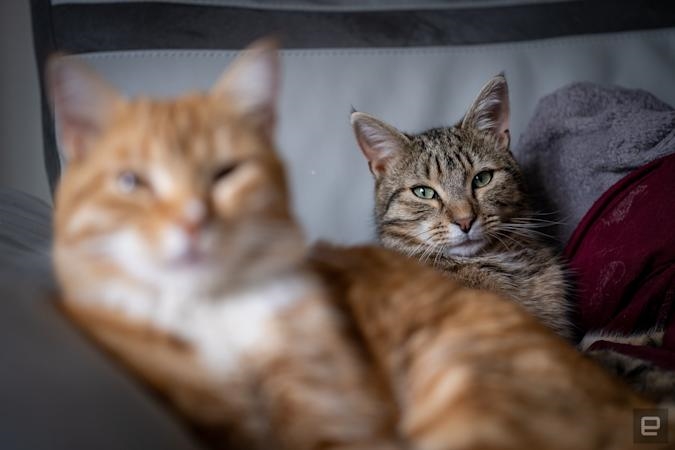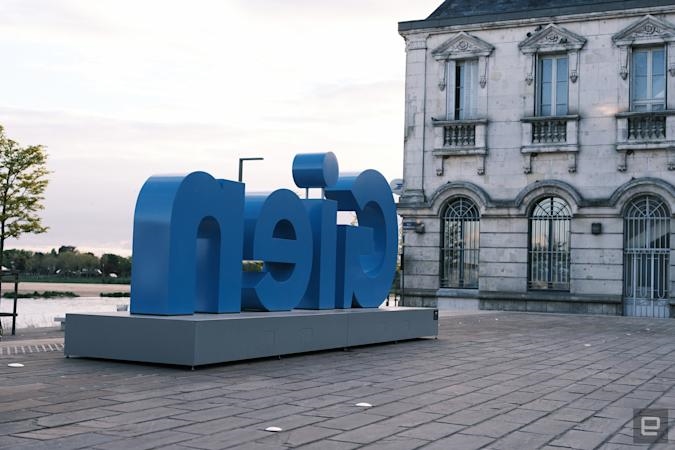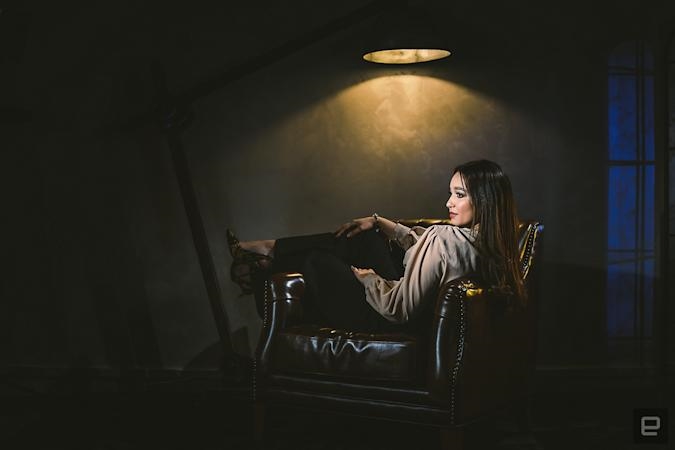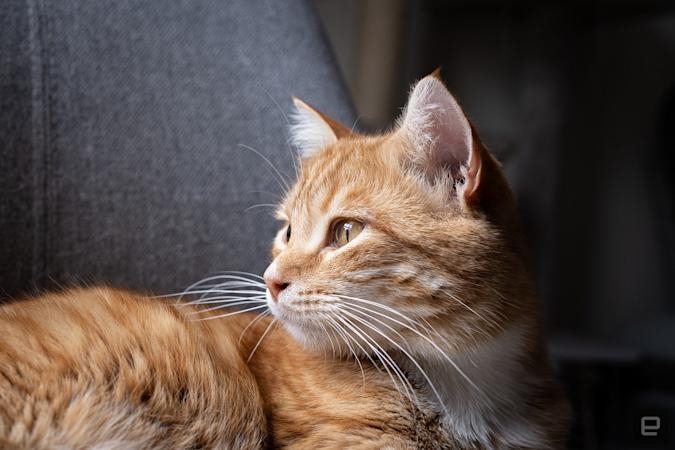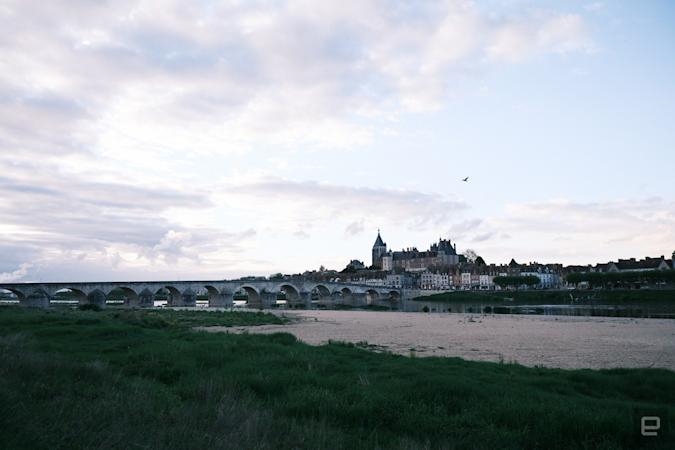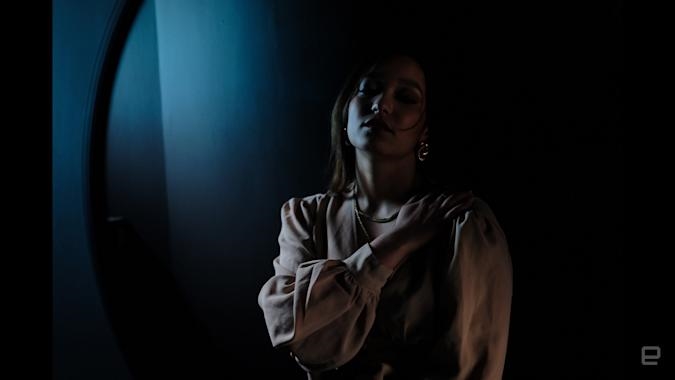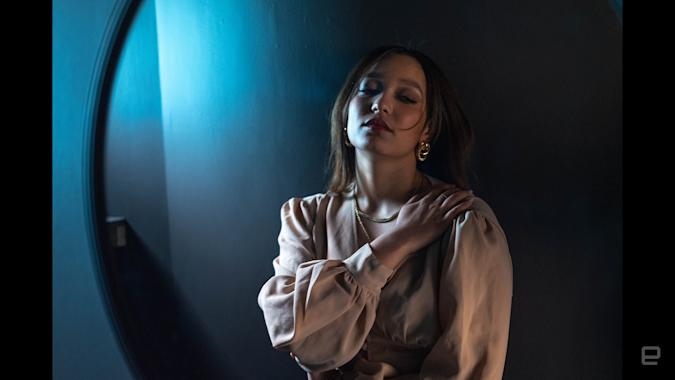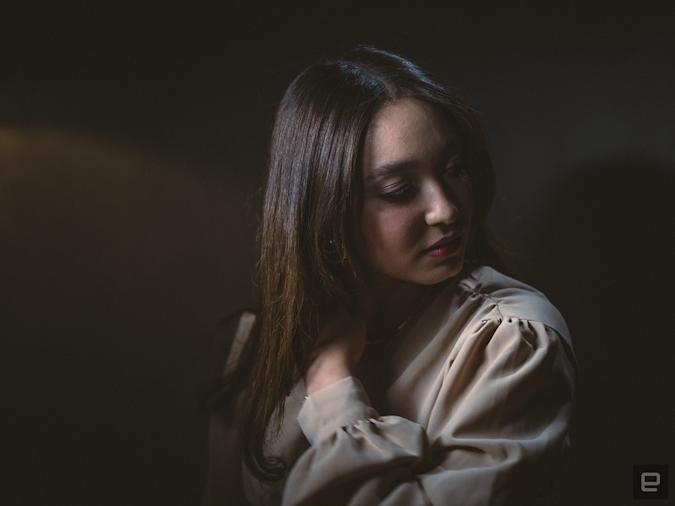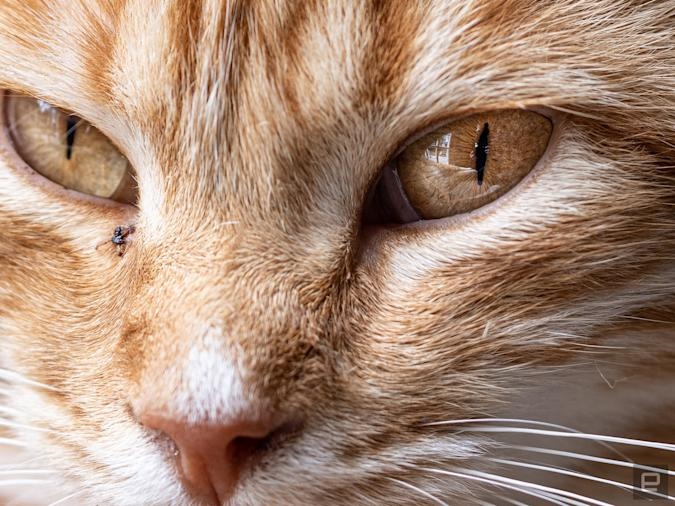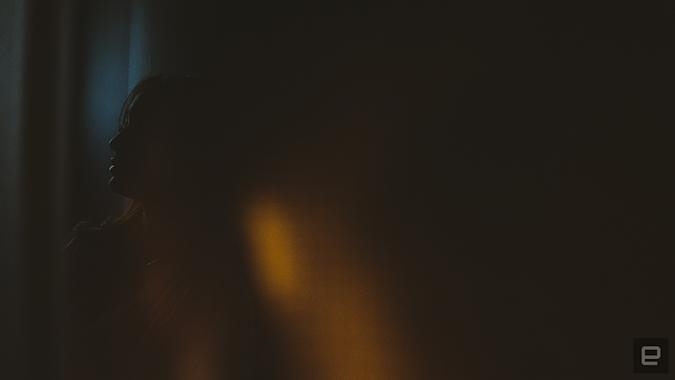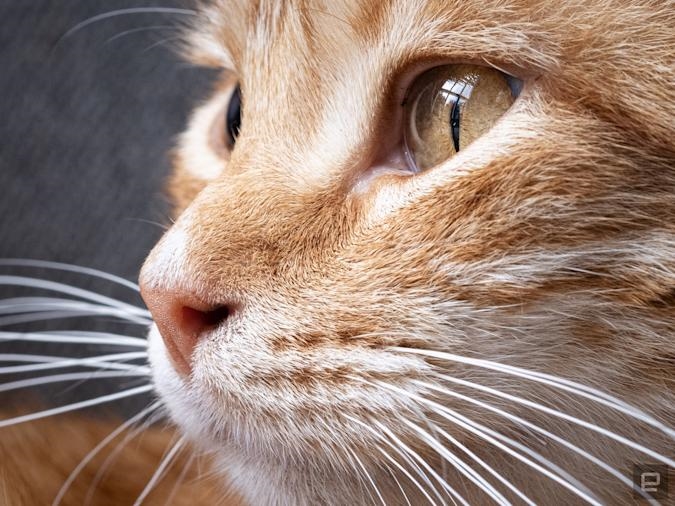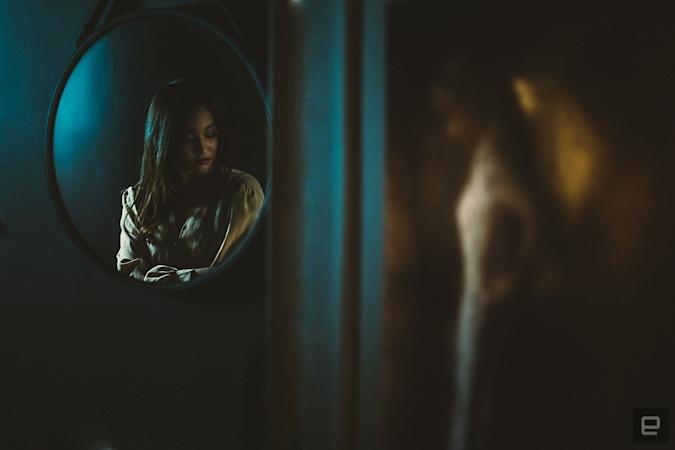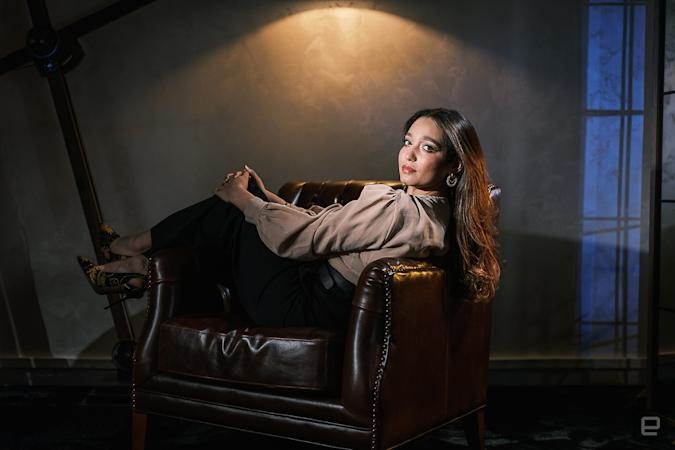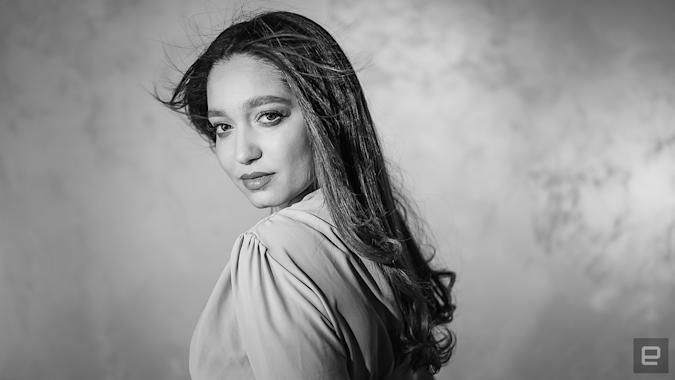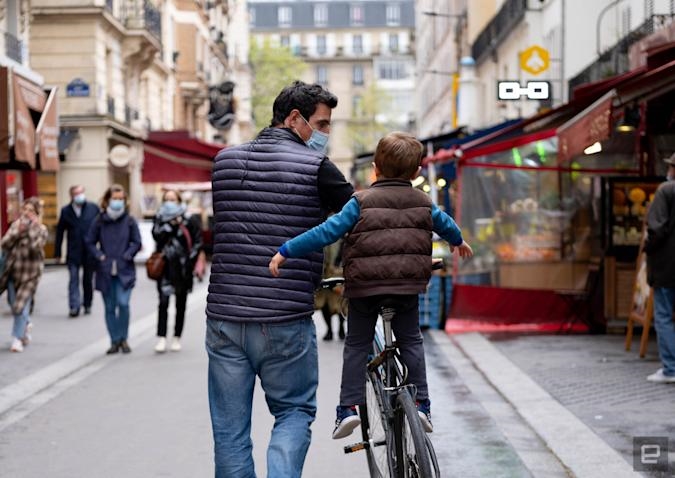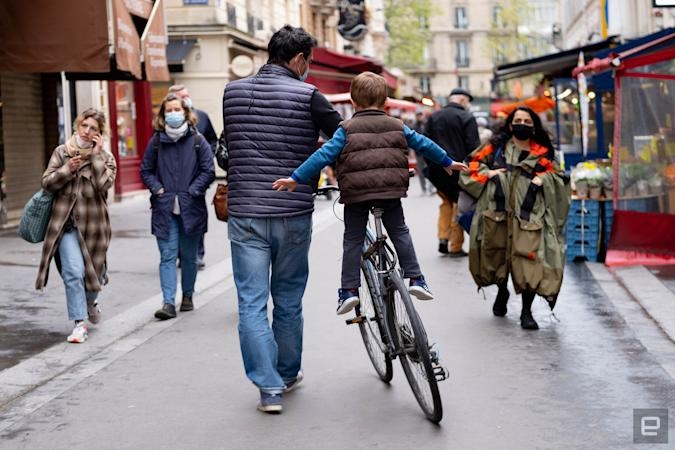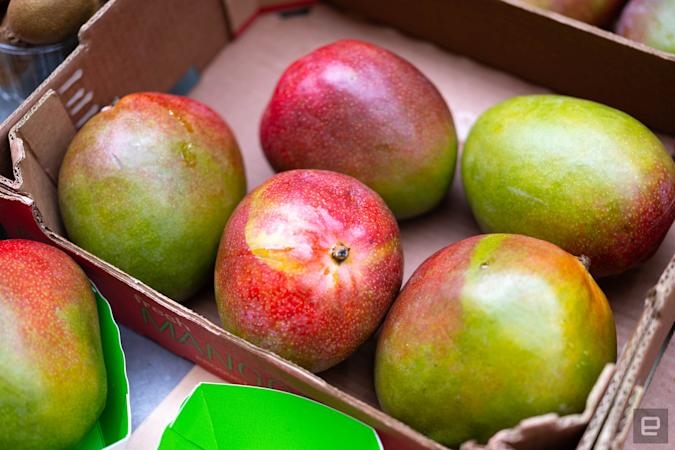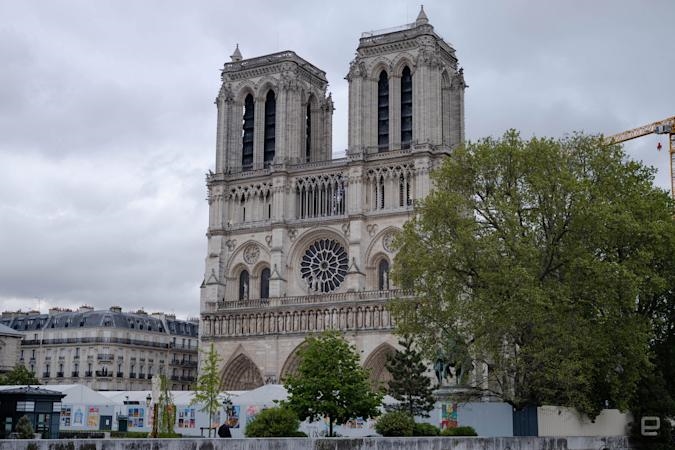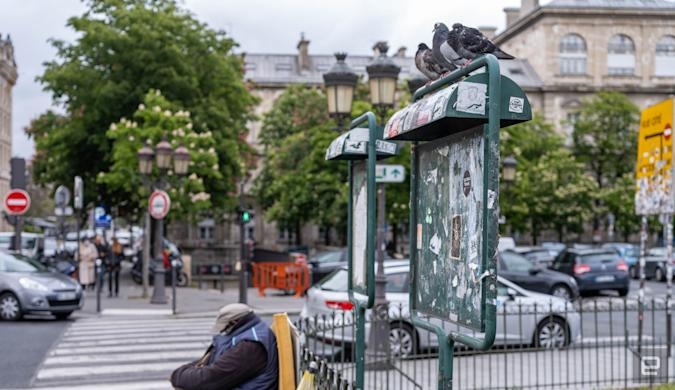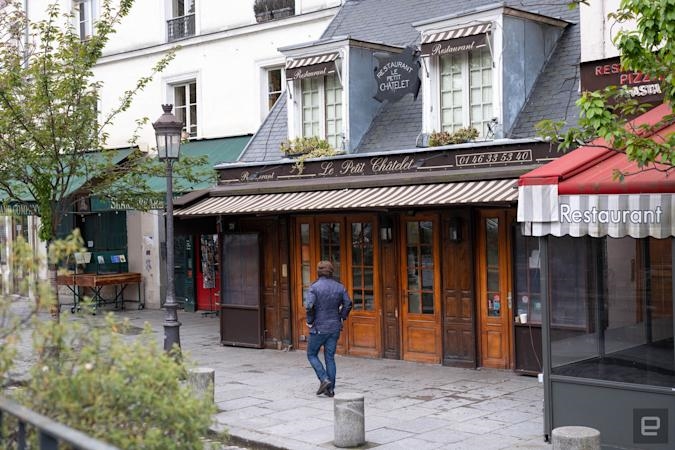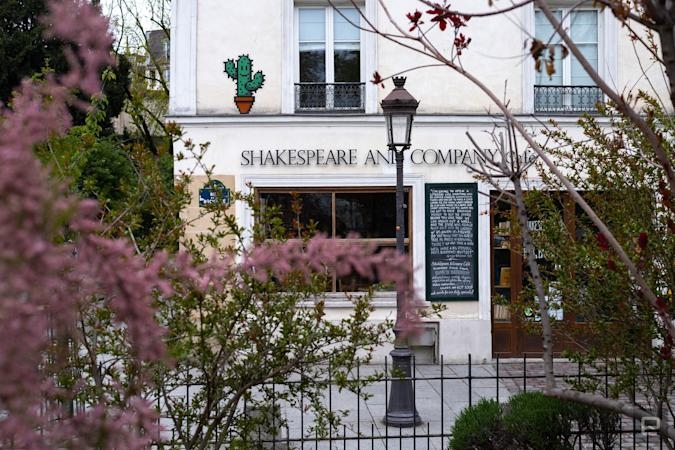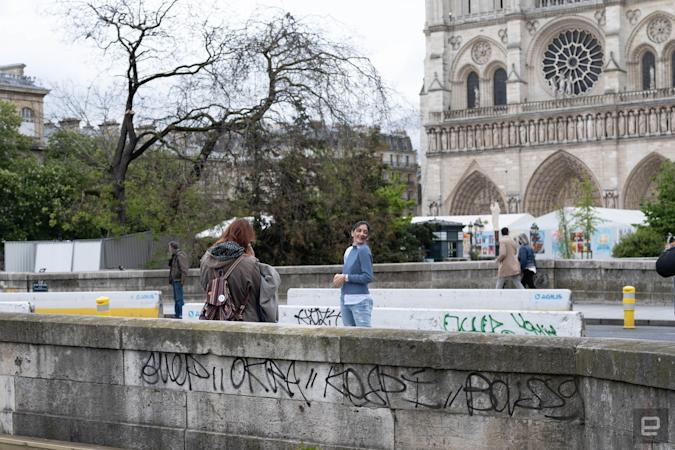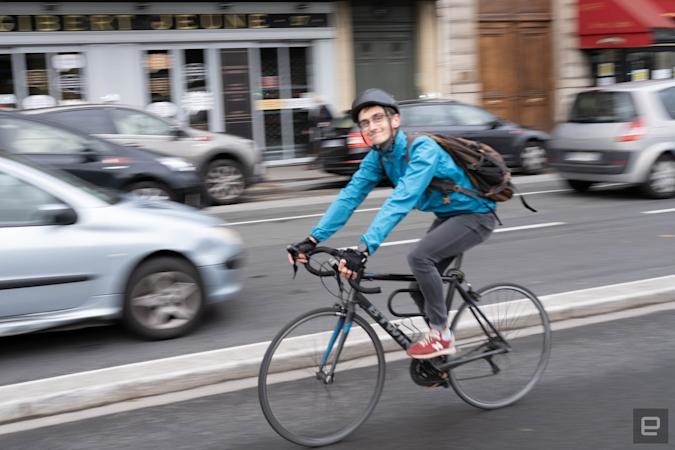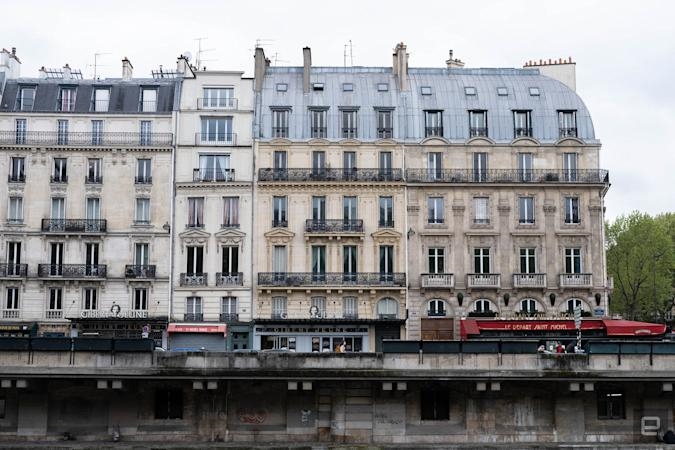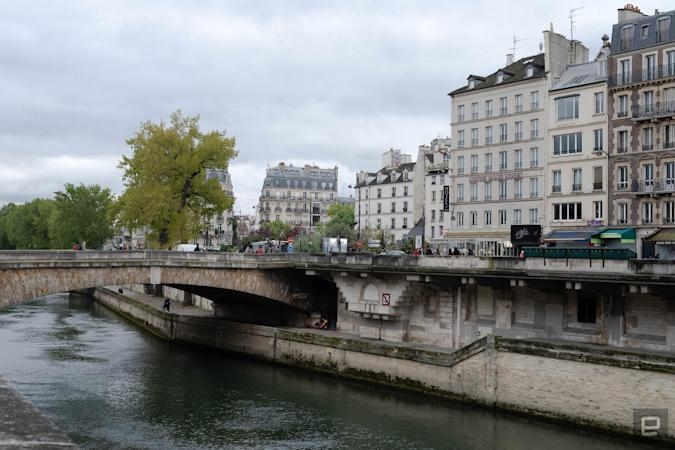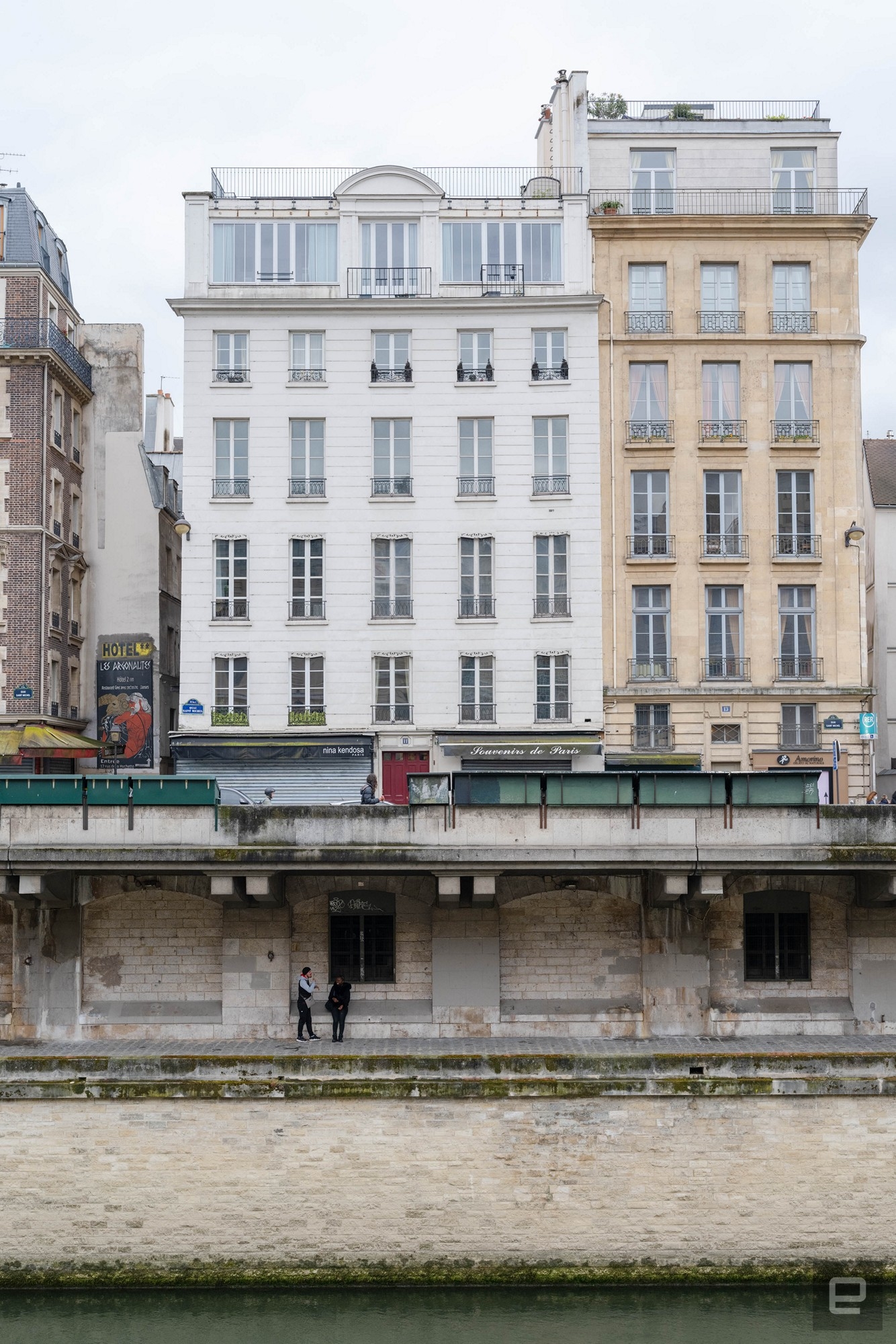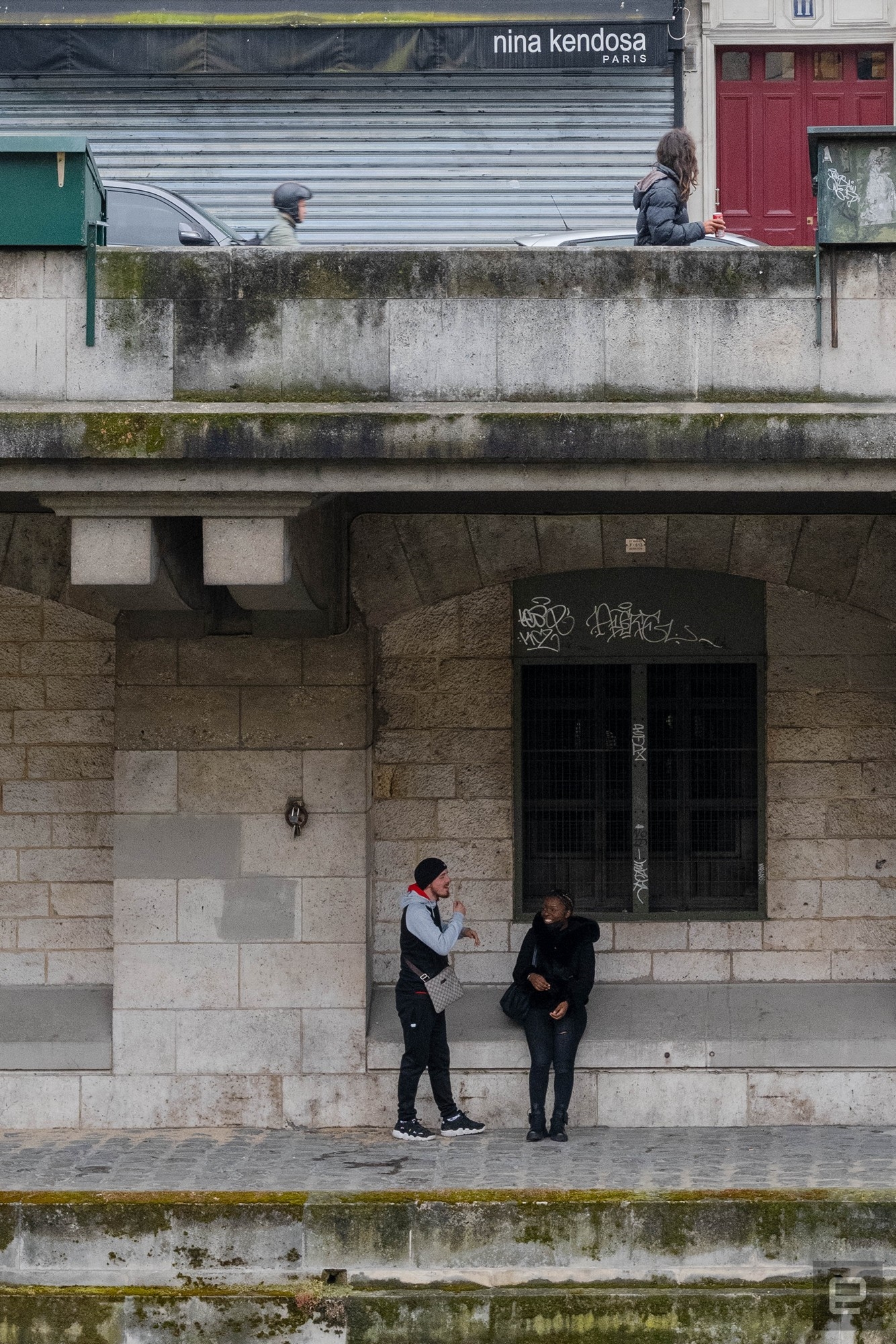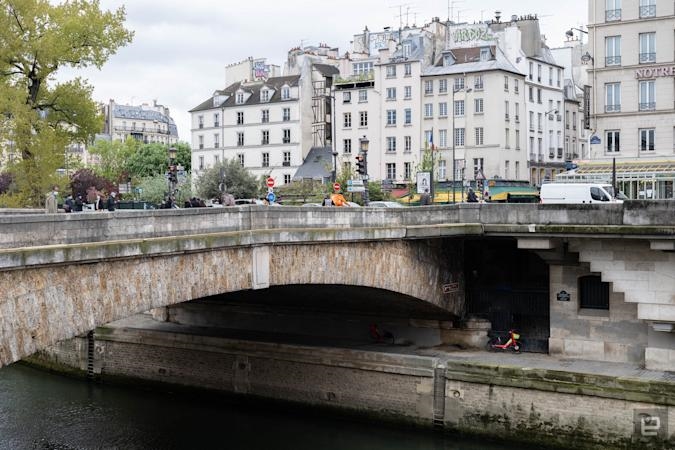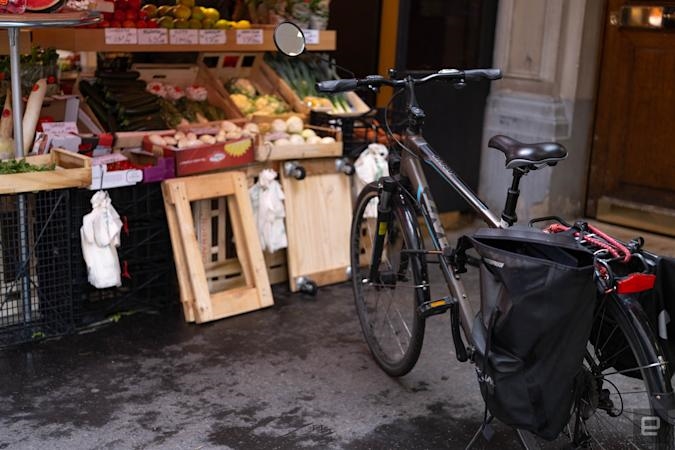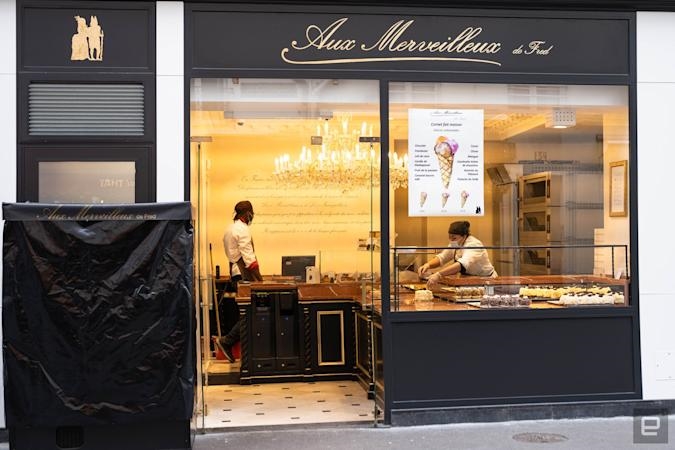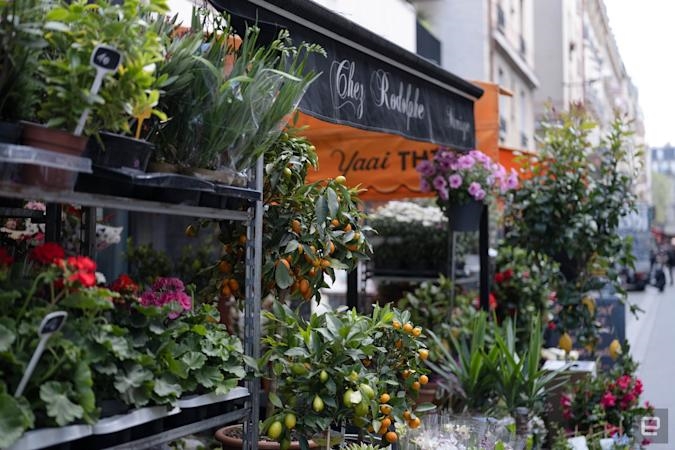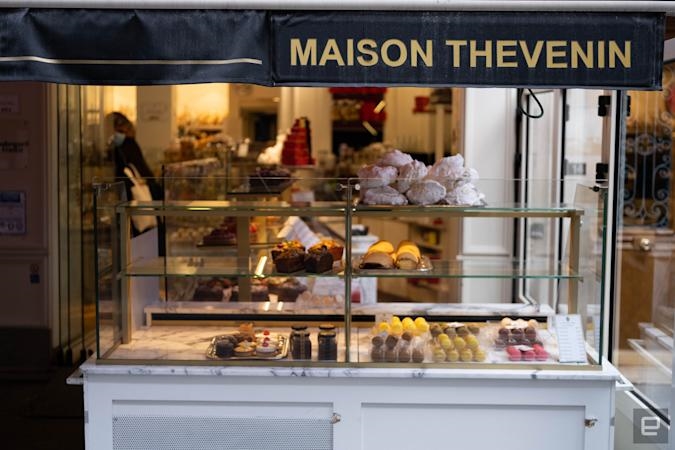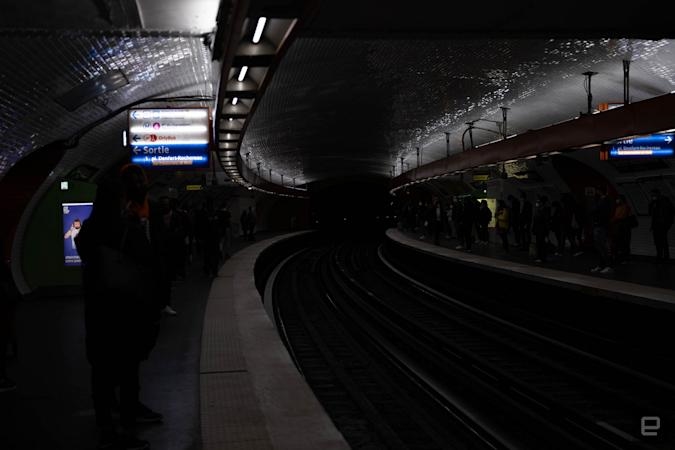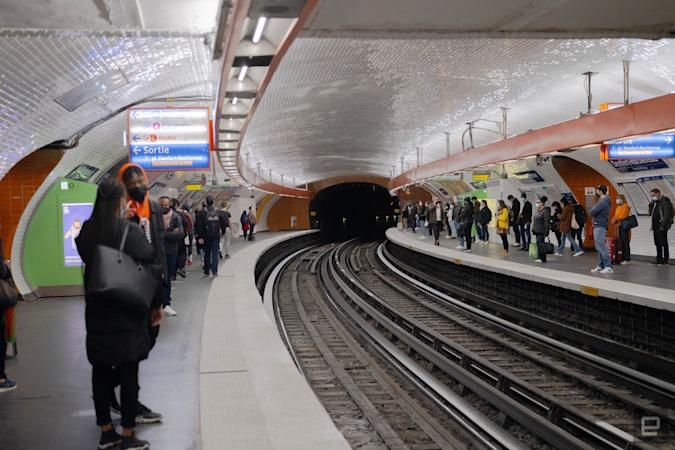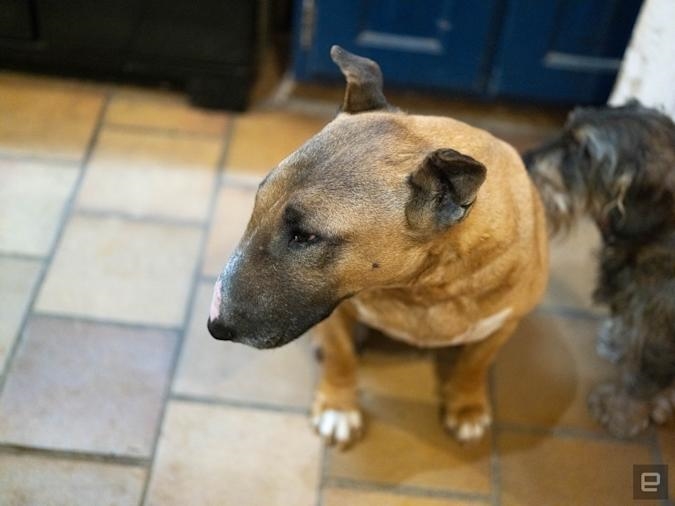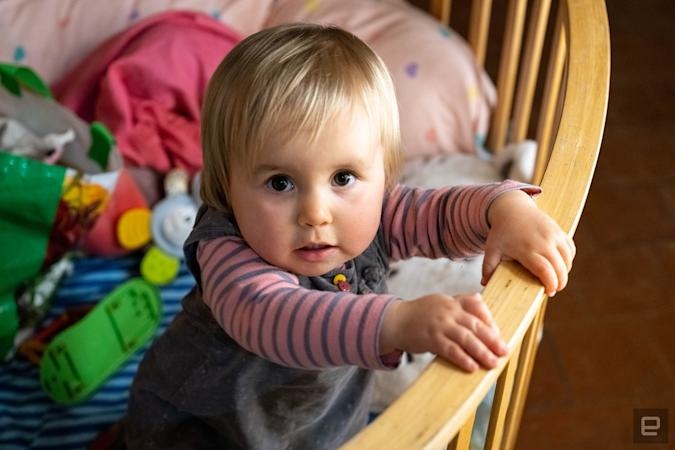Fujifilm’s $3,999 GFX 50S II is its most affordable medium format camera yet
Fujifilm GFX 100S review: Medium format power in a smaller body
World-beating image quality, but the autofocus needs improvement.

When it launched the GFX 50S in 2017, Fujifilm made a momentous decision to skip past full-frame sensors and go straight to medium format. The idea was to offer higher quality for studio, landscape and artistic work than is possible with full-frame.
While it produced beautiful images with unprecedented detail, the GFX 100 unveiled in 2018 was large, difficult to handle and priced at an eye-watering $10,000. However, Fujifilm rectified all that with the launch of the GFX 100S, a model that looks and feels like a “normal” mirrorless camera, while costing a bundle less at $6,000.
GFX100S
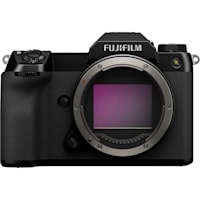
Pros
- World-beating image quality
- Great handling
- Surprisingly good video
- High build quality
Cons
- Mediocre autofocus
- Needs a better EVF
- Slow shooting speeds
The GFX 100S isn’t much bigger than Panasonic’s full-frame, 45-megapixel S1R, but it has a sensor that’s 70-percent larger with more than double the resolution. At the same time, Fujifilm says it’s faster than ever, with features you’d expect on a modern mirrorless camera like eye-detect autofocus and in-body stabilization. The question is, how does it stack up against recent models like the Sony A1 and Canon R5? I took it out to see and also loaned it to a pair of professional photographers who were considering buying this very model. Here’s what we found.
Body and Handling
The previous GFX 100 is a big chunk of camera that weighs in at 1,400 grams or just north of 3 pounds. With the GFX 100S, Fujifilm cut it down by 35 percent to 900 grams (just south of 2 pounds). It’s about two-thirds the height and slimmer in profile, to boot. The primary reason for the smaller size and weight is the elimination of the vertical grip and accompanying controls.
Gallery: Fujifilm GFX 100S review gallery | 33 Photos
It feels better in hand than any past GFX mode because it’s shaped more like a conventional mirrorless camera. At the same time, it offers a deeper grip that’s more comfortable, while adding an extra physical mode dial on top.
It doesn’t offer as many physical controls as the X-T4 or other Fuji X-series cameras, but operation is still very tactile. You get a pair of command dials and the aforementioned mode dial, along with a joystick that moves the AF tracking point diagonally and not just up and down like before. Other controls include a focus select switch along with buttons for the drive select, quick menu and more. As with other Fuji cameras, aperture can be controlled from a ring on the lens.
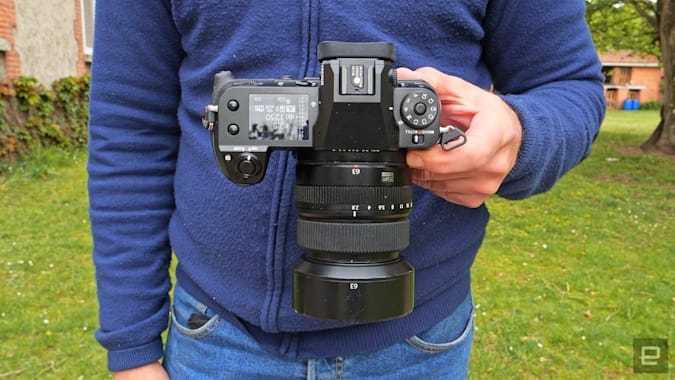
I would have liked rear control and exposure compensation dials, but I didn’t miss the shutter and ISO dials from the X-T4. It’s just as easy (maybe easier actually) to use the exposure compensation button with the rear dial, or “click” the front dial to change what it controls (shutter speed or ISO, for instance). If you really miss those dials, you can see a simulated version on the top display, which can also view settings or a histogram. I found the latter to be a handy way of checking exposure without cluttering the rear display.
The menu system is decent, though not as intuitive as Sony and Panasonic’s menus, but you can largely control things with the quick menu or manual controls. Overall, the GFX 100S handles better than any other medium format camera I’ve tried. Everything is easy to find, especially if you’ve used Fujifilm cameras before.
Fujifilm developed a new in-body image stabilizer (IBIS) for the GFX 100S that’s much smaller than the unit on its predecessor. It even managed to improve the performance with 6 stops of shake reduction, compared to 5.5 stops before. Every little bit helps, as medium format camera sensors can be sensitive to hand shaking. With the IBIS turned on, I was able to get sharp shots at relatively low shutter speeds down to an eighth of a second or so.
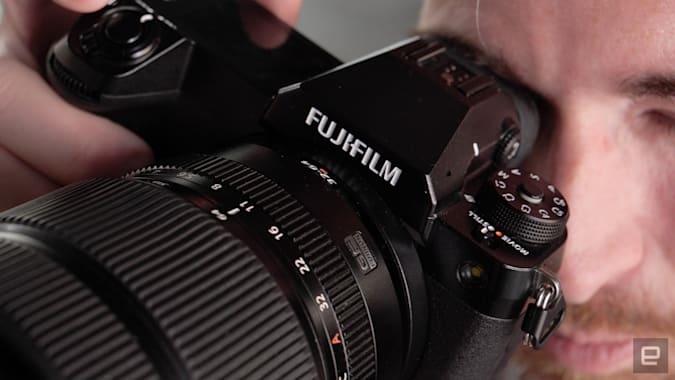
The 3.69-million dot OLED electronic viewfinder (EVF) wasn’t up to the standards I’d expect on a $6,000 camera, considering that the last model (and the $2,500 Panasonic S1, for example) has a 5.76-million dot OLED model. On top of that, if you want to use the maximum resolution available (adjustable in the menus), the refresh rate drops to a pokey 50Hz. You can get better refresh speeds (85Hz) but then the resolution drops.
The 3.2-inch, 2.36-million dot rear touch display tilts down, up and to the side, offering a nice high-resolution view and a nice array of adjustments. It lacks a flip-out display, but I don’t think many people are going to buy this camera to vlog or shoot selfies.
It comes with dual high-speed SD card slots that can be used for backup or extra storage, a USB port for charging and data transfers, mic and headphone ports and a micro HDMI port. The battery is borrowed from the X-T4 and isn’t as large as the ones on other GFX bodies, but it delivers a reasonable 460 shots on a charge. There’s no option for a vertical battery grip like the GFX 50S — but that’s a fair tradeoff for the drastic weight reduction.
Performance
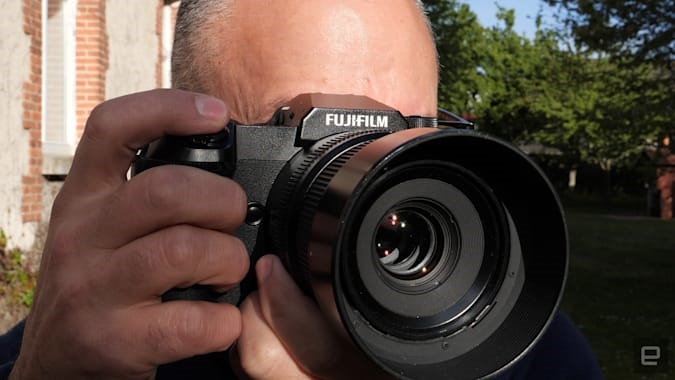
Performance is a mixed bag with the GFX 100S. It is more responsive than any other medium-format camera, offering shooting speeds of 5 fps with a buffer limit of 14 lossless RAW images (about 1.4GB of data). However, that’s a far cry from the speeds you’ll see on recent high-resolution models from Sony and Canon, or Fujifilm’s own X-series.
The autofocus system looks good on paper with 3.76 million phase-detect pixels and up to 425 selectable AF points. It also offers touch-selectable continuous AF tracking along with eye- and face-detect AF.
However, it’s not terribly snappy, with some lag that was particularly noticeable after reviewing Sony’s 50-megapixel A1. The eye-detect and tracking work reasonably well for studio subjects who don’t move much, but it’s not as good in more dynamic situations. On top of that, the AF speed highly depends on the GFX lens you’re using.
To be sure, the GFX 100S is designed for studio work, not sports. However, recent full-frame cameras like the Sony A1 manage to combine high-resolution image quality with excellent performance. Not all photographers may be willing to sacrifice that to get the highest possible quality (which the GFX 100S does deliver, as we’ll see soon).
That point was driven home by Nathanael Charpentier and Samuel Dejours, photographers who do not only studio work but weddings, birth photography and more. They were looking at purchasing a GFX 100S for studio and high-resolution work, but after testing it out for a couple of days, are no longer sure.
Pro photographers comment on the Fujifilm GFX 100S
The interview has been translated from French and abridged.
What did you like and dislike about the GFX 100S?
Nathanael: What I like is the handling. I like the high resolution. What I didn’t like as much was the autofocus. I had a lot of problems with that because I’m used to Sony cameras. On the GFX 100S, the autofocus is a lot slower and less accurate. And for the type of work I do, with candid photography on the fly, that could be a hindrance.
What type of work would that affect?
Nathanael: We already knew that it wasn’t designed for candid and live work, but our tests have really confirmed that. It would be tricky to shoot weddings, births and any other types of photography where I need to have rapid autofocus. For studio work, when we have a lot more time, it would be easier. In that case, the high-definition of the sensor is appealing. So we’re still debating whether to use one for the studio.
What aspects did and didn’t meet your expectations for studio work?
Samuel: Where you notice the difference, of course, is when you zoom in on the image. With 100 megapixels you can crop in a lot and still get sharp photos. In that sense, our other cameras are more limited. But when you don’t crop in, it’s really difficult to see the difference. When retouching photos [in Lightroom] sometimes you can see a bit more latitude in the Fuji compared to the Sony. However, it’s not a glaring difference.
Nathanael: We also took some images in low light at ISOs as high as 12,800. There’s some noise, but it’s subtle and pretty looking.
Did the fact that you just tested the Sony A1 have any bearing on your opinion?
For sure. And our A9s are also quick. We’re really used to those fast autofocus speeds that make our work easier and give us very few unusable images. The fact that we tested the A1 (two weeks before) can’t help but color our opinion on the AF speed of the GFX 100S. But we were already used to having a very good autofocus system, so the slower autofocus on the GFX 100S was often annoying.
Gallery: Fujifilm GFX 100S review sample studio images | 24 Photos
Image quality
The GFX 100S really delivers on image quality, starting with its surprisingly good low-light capability. You might not expect that from a camera with a 102-megapixel sensor. However, those pixels are spread across a huge 43.9 x 32.9 mm sensor area, so the pixel pitch is actually the same (3.76 microns) as the 61-megapixel sensor on Sony’s A7R IV.
Gallery: Fujifilm GFX 100S camera sample gallery | 36 Photos
With backside illumination and a dual-gain design (this is likely a Sony sensor), it performed better than I expected in dimly-lit conditions. I saw little noise at ISO 6,400 and got clean images at ISO 12,800 with some light noise reduction.
At lower ISOs, the GFX 100S delivers clean images with incredible resolution, making it ideal for things like archival preservation on top of portrait and landscape work. If 102 megapixels isn’t enough, you can use the pixel shift option to get four times the resolution, though that really requires a tripod and static image.
A sensor this large allows for extremely shallow depth of feel if you need that for portrait shooting. Combined with a fast lens like the 80 mm f/1.7, it delivers incredible bokeh and subject separation. At the same time, it makes focus accuracy more critical. That could be an issue given that occasionally unreliable AF performance.
It delivers RAW files with up to 16 bits of color depth compared to 14 bits on most cameras. With that bit of extra latitude, it delivers wider dynamic range than any other camera (apart from the GFX 100) that’s a small notch above the Sony A1 and A7R IV, or Nikon’s Z6 II and Z7 II.
The GFX 100S is designed for RAW photography but if you do shoot JPEGs, it delivers sharp, color-accurate images. That’s ideal for previews or photographers who want to use Fujifilm’s popular film simulation modes. With the GFX 100S, Fuji introduced a new one called Nostalgic Negative that’s based on the look of US photographer Stephen Shore.
If you’re thinking of using the GFX 100S as a street photography camera and want to stay quiet with the electronic shutter, beware. It has horrendous rolling shutter in that mode unless you hold it very still. If you’re not on a tripod, stick to the mechanical or front curtain shutter settings.
Video
Fujifilm has massively improved the video capabilities of its camera lineup over the last few years, and the GFX 100S is no exception. With a smart line-skipping implementation that takes advantage of the full sensor width, it’s possibly the best medium-format camera for video.
The full sensor width allows for a razor-fine depth of field and beautifully soft bokeh. The downside is that it’s not quite as sharp as fully downsampled video, meaning you’re going to see some moire (rainbow patterns) and aliasing (jagged diagonal lines).
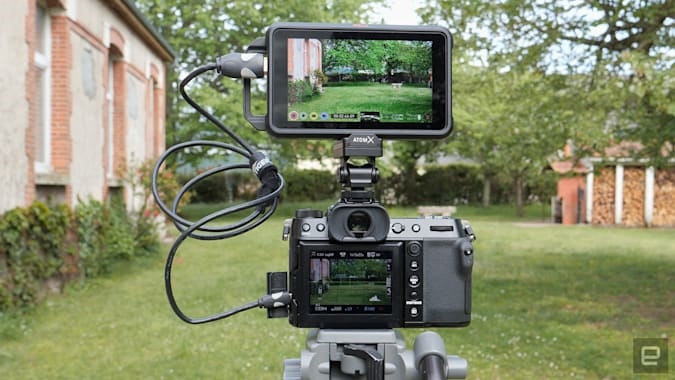
Line-skipping also enabled Fujifilm to read the sensor at a relatively fast speed for its size. Considering how bad rolling shutter is in still mode, it’s reasonably well controlled for video — visually, it’s around the same as Sony’s aging A7 III.
Image stabilization works pretty well for video and you can boost it a bit using the digital IS mode. However, you still have to be very smooth when moving the camera to avoid jolts that can induce rolling shutter, so I’d only use it for static handheld shots and not any tracking, panning or tilting.
Like the GFX 100, the GFX 100S offers 4K 10-bit video with Fujifilm’s F-Log option. And for extra flexibility in post, it will even capture 12-bit ProRes RAW to an Atomos Ninja V recorder, albeit with limited ISO settings and no white balance control. That’s a very interesting feature for videographers that you won’t find on any other mirrorless camera (except, again, the GFX 100 thanks to a firmware update).
The video is a touch soft, but it’s easy to manipulate in post thanks to the 10-bit and RAW capabilities. The huge sensor also gives it a unique, IMAX-like quality you can’t find on any other camera. As with the photos, colors are accurate with nice skin tones thanks to Fujifilm’s latest color science. It’s not meant to be used as a video camera, of course, but it’s fine for occasional video use along with photos.
Wrap-up
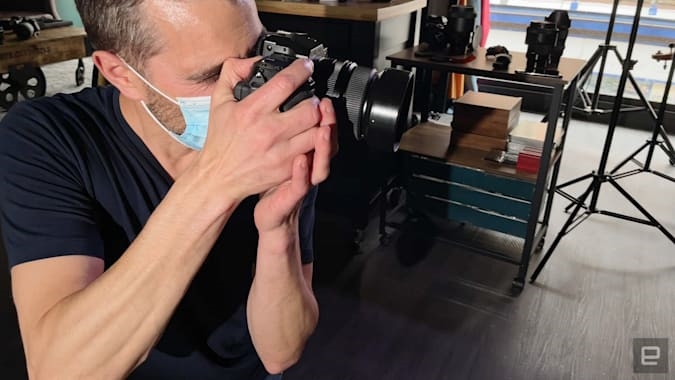
It’s difficult to evaluate a camera like the GFX 100S on the whole, because it’s really designed for specific jobs that require high resolution, like studio, artistic or landscape shooting. However, cameras aren’t reviewed, or purchased in a vacuum. Buyers might be weighing this model against other medium format cameras, while also looking at high-resolution full-frame models.
Most of the latter are significantly cheaper, including the $3,900, 45-megapixel Canon EOS R5, $3,100, 45-megapixel Nikon Z7 II, 45-megapixel Panasonic S1R and $3,500, 61-megapixel Sony A7R IV. The 50-megapixel Sony A1 is actually more at $6,500. On the medium-format side, buyers may also be looking at the $6,399 Hasselblad 970X 50C, $5,750 Hasselblad X1D II 50C or Fujifilm’s own $4,499 GFX 50R.
After using the camera for several days, My photographer friends and I very much appreciated the image quality for studio and archival work. However, they found that the speed and focus hit rate didn’t meet their needs for covering births or weddings compared to their Sony A7R III, A9 and other models. At the same time, they found that the difference in quality wasn’t as pronounced as they’d hoped. Before testing the GFX 100S they were fairly certain they were going to buy one, but now they’re not as positive.
What this shows to me is that Sony and Canon have set extremely high standards for autofocus with relatively high megapixel cameras. I wouldn’t expect a large sensor camera to keep pace, but the GFX 100S was not even in the ballpark. To that end, if looking to move from full-frame to medium format, you might find that the slower performance won’t match your style of working.
That said, the GFX 100S is still faster than all of its medium-format rivals. Most importantly, it delivers the best image quality available for photographers who demand that and don’t mind the slower performance. For $6,000, it’s actually a steal for that kind of buyer.
(33)

